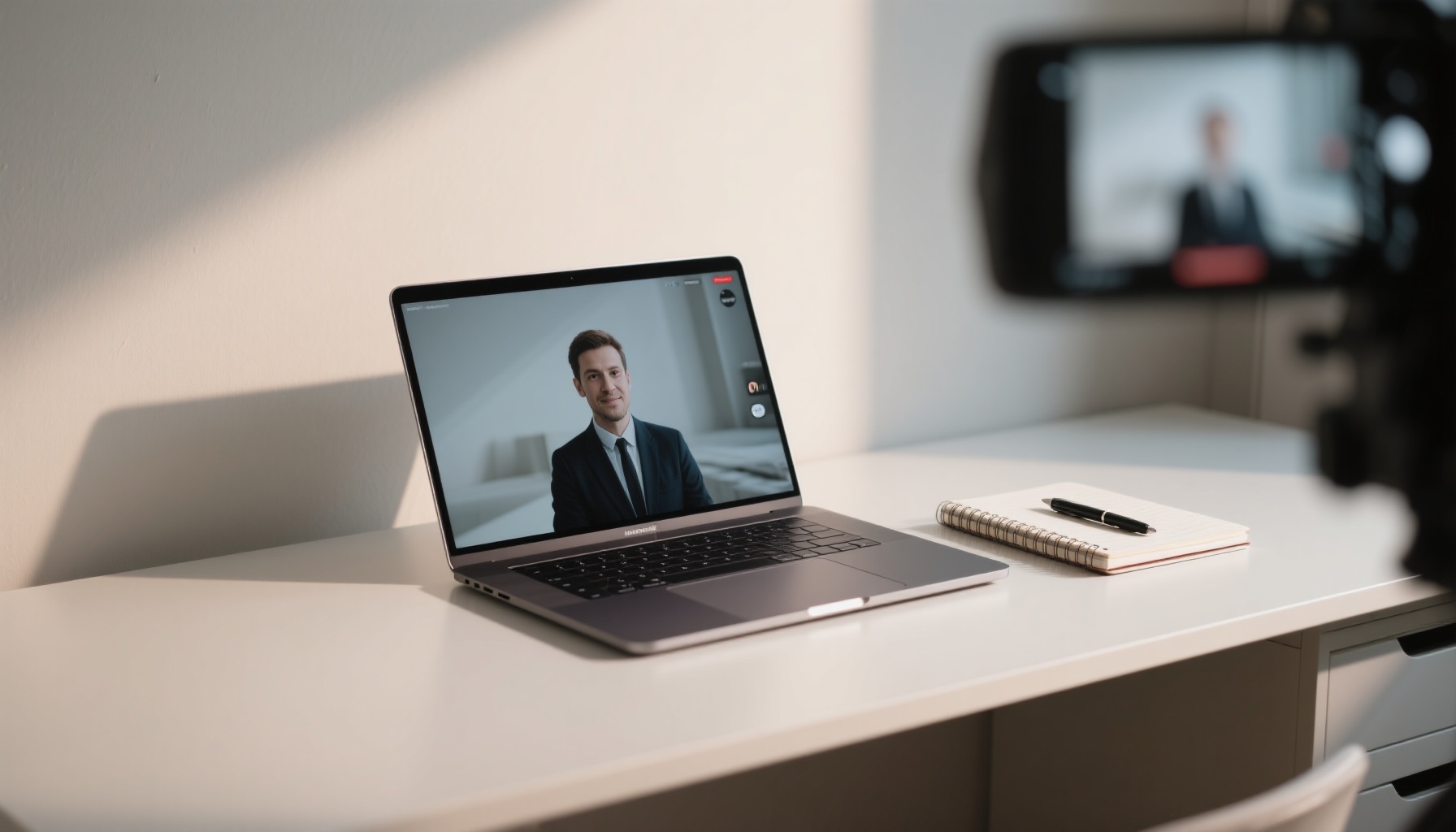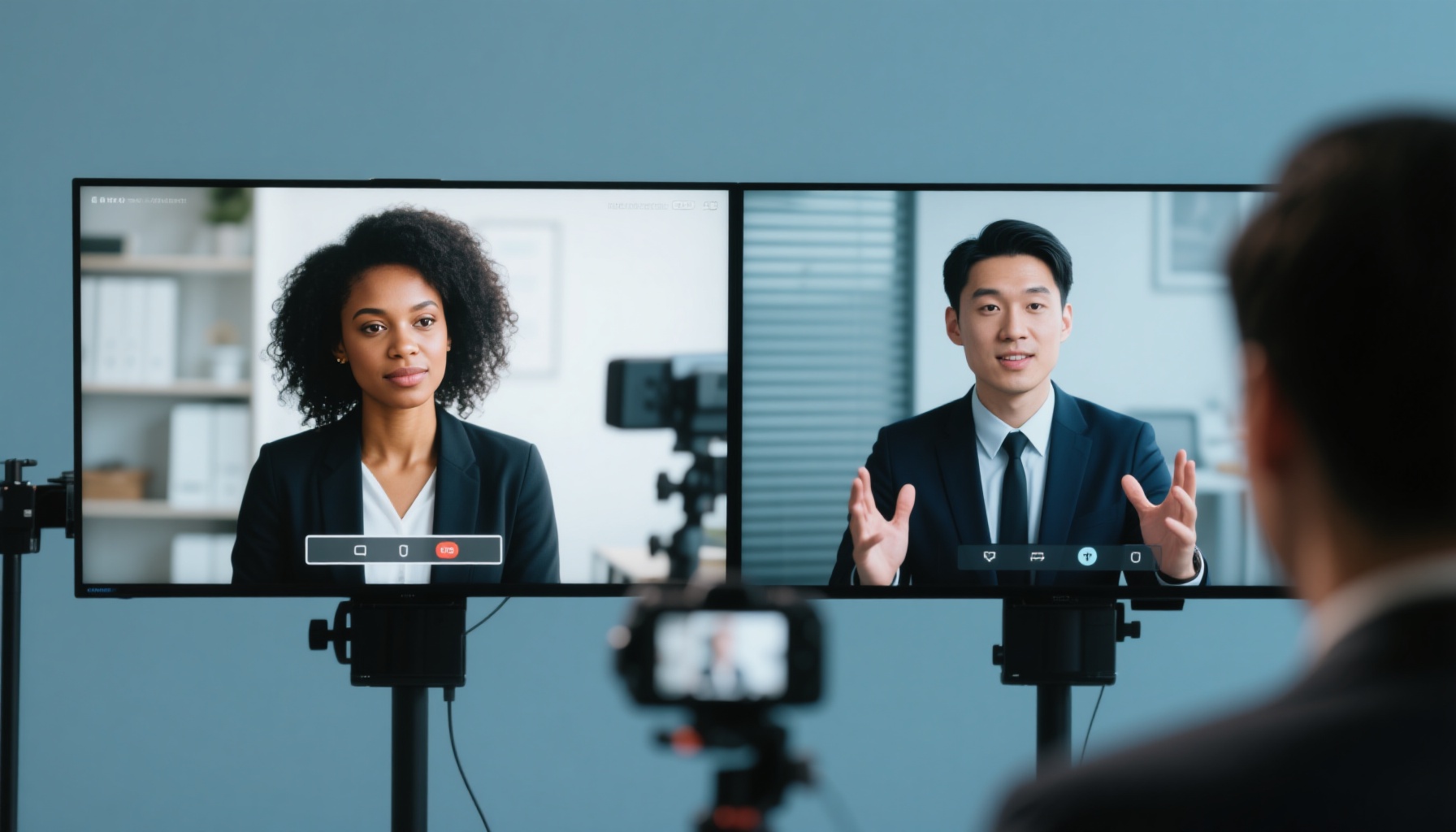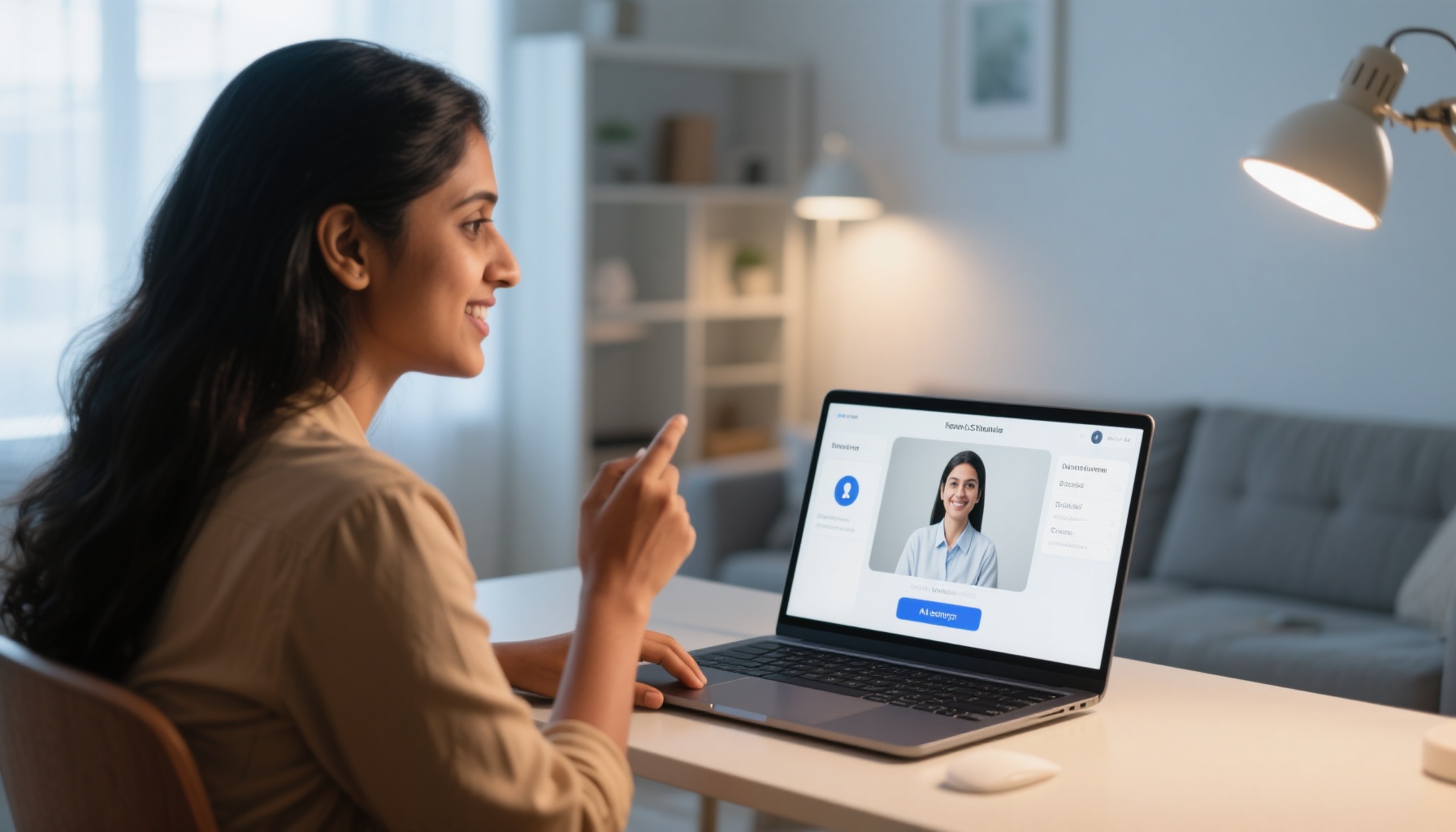Mastering the Virtual Interview in 2025: A Step-by-Step Guide
Ace your next virtual interview! This comprehensive guide provides actionable steps to master technical setup, communication, and practice, turning anxiety into confidence.

The landscape of job interviews has fundamentally shifted. Virtual interviews have evolved from a pandemic necessity to a permanent fixture in the hiring process, with over 82% of companies now incorporating video interviews into their standard recruitment workflow. While this shift offers convenience and broader opportunities, it also introduces unique challenges that can make or break your chances of landing that dream job.
The key to virtual interview success isn't about being perfect—it's about controlling what you can control. When you master your technical setup, optimize your environment, and practice your delivery, you eliminate the major sources of anxiety that derail most candidates. This allows you to focus entirely on what matters most: showcasing your skills, experience, and personality.

Technical Mastery: Your Foundation for Success
Test Everything 24 Hours in Advance
Technical failures are the number one source of virtual interview anxiety, but they're also the most preventable. Your technology check should happen at least 24 hours before your interview, not 10 minutes before.
Start with your internet connection. Run a speed test to ensure you have at least 10 Mbps upload and download speeds. If your connection is unstable, consider upgrading temporarily, using your phone's hotspot as backup, or relocating to a space with better connectivity.
Audio and Video Quality
Poor audio quality is more damaging than poor video quality. Invest in a decent USB microphone or use wired earbuds rather than relying on your laptop's built-in microphone. Test your audio by recording yourself speaking and listening for clarity, background noise, and volume levels.
For video, ensure your camera is at eye level. This simple adjustment dramatically improves how you're perceived by interviewers. If you're using a laptop, place it on a stack of books or invest in a laptop stand. External webcams often provide better quality than built-in laptop cameras, especially in challenging lighting conditions.
Platform Familiarity
Don't assume all video platforms work the same way. Whether it's Zoom, Microsoft Teams, Google Meet, or another platform, download and test it beforehand. Learn the basic functions: how to mute/unmute, turn your camera on/off, share your screen if needed, and access the chat function.
Creating Your Professional Virtual Presence
Lighting: Your Secret Weapon
Lighting can make you look like a polished professional or wash you out completely. The goal is soft, even lighting on your face. Natural light from a window facing you is ideal, but avoid sitting with a window behind you—this creates a silhouette effect.
If natural light isn't available, invest in a simple ring light or position a desk lamp behind your computer screen, pointing toward your face. Avoid overhead lighting alone, as it creates unflattering shadows.

Background and Environment
Your background should be clean, uncluttered, and professional. A plain wall, bookshelf, or subtle artwork works well. While virtual backgrounds can be tempting, they often glitch and can be distracting. If you must use one, test it thoroughly and ensure your computer can handle it without lag.
Control your environment completely. Inform household members about your interview time, silence your phone, close unnecessary applications, and have a glass of water nearby. Consider putting a "Do Not Disturb" sign on your door.
Professional Appearance
Dress as you would for an in-person interview, not just from the waist up. This psychological trick helps you feel more professional and prevents awkward moments if you need to stand up. Choose solid colors over busy patterns, as they translate better on camera.
Mastering Virtual Communication and Body Language
Eye Contact and Camera Awareness
The biggest challenge in virtual interviews is maintaining "eye contact." Remember, looking at the interviewer's eyes on your screen doesn't create eye contact—you need to look directly at your camera lens. This feels unnatural at first but creates the impression of direct eye contact for the interviewer.
Place a small arrow or dot near your camera as a reminder. Practice looking at the camera while speaking, especially when making key points or answering important questions.
Body Language That Translates
Your body language needs to be more deliberate in virtual settings. Sit up straight, keep your shoulders back, and use hand gestures within the camera frame. Nod slightly more than you would in person to show engagement, as subtle movements can be lost in video transmission.
Avoid common virtual interview mistakes: leaning too far back or forward, looking away from the camera frequently, or fidgeting with objects off-camera. Your energy and enthusiasm need to be slightly amplified to translate effectively through the screen.

Structuring Your Responses for Virtual Success
The STAR Method in Virtual Format
Virtual interviews require more structured responses than in-person conversations. The STAR method (Situation, Task, Action, Result) becomes even more critical when you can't rely on physical presence to maintain engagement.
Keep your responses concise and punchy. Aim for 1-2 minutes per answer, as virtual attention spans are shorter. Start with your result or key point, then provide the supporting details. This "headline first" approach ensures your main message gets across even if technical issues interrupt you.
Avoiding the Rambling Trap
To avoid rambling, it's crucial to practice concise storytelling. You can record yourself, or use an AI assistant like AceRound which provides real-time feedback and smart prompts to help you stay on track during mock interviews. The immediate feedback helps you identify when you're losing focus or taking too long to make your point.
Practice your key stories beforehand, but don't memorize them word-for-word. You want to sound natural and conversational, not robotic. Have bullet points of your main examples ready, but allow for natural flow in your delivery.
The Power of Realistic Practice and Rehearsal
Mock Interviews: Your Competitive Edge
Once you have your key talking points, the best way to prepare is through realistic simulation. You can ask a friend, or for more rigorous and repeatable practice, use a tool like AceRound to run unlimited mock interviews and get comfortable with the format.
The biggest challenge in preparing alone is the lack of feedback. An AI copilot acts as your personal interview coach, analyzing your responses and providing post-interview reports so you know exactly where to improve, turning anxiety into confidence.
Practice common virtual interview scenarios: technical difficulties mid-interview, unexpected questions, and maintaining energy throughout longer interview processes. The more you practice these situations, the more naturally you'll handle them during the actual interview.
Recording and Self-Assessment
Record yourself answering common interview questions and review the footage critically. Pay attention to your pace, clarity, filler words, and overall presence. This self-assessment process, combined with AI-powered feedback tools, creates a comprehensive preparation strategy that addresses both content and delivery.

Day-of-Interview Execution
Final Technical Check
Thirty minutes before your interview, conduct a final technical check. Test your internet, audio, and video one more time. Close all unnecessary applications to maximize your computer's performance. Have the interviewer's contact information ready in case you need to reach out about technical issues.
Log into the interview platform 5-10 minutes early, but don't join the meeting until 2-3 minutes before the scheduled time. This shows punctuality without appearing overeager.
Managing Virtual Interview Nerves
Virtual interviews can feel more intense because you're staring directly at a screen. Take deep breaths, remind yourself that the interviewer wants you to succeed, and focus on having a conversation rather than delivering a performance.
If technical issues occur, stay calm and professional. Have a backup plan ready, such as calling in by phone if video fails. Most interviewers are understanding about technical difficulties—it's how you handle them that matters.
Building Genuine Connection Through the Screen
Humanizing the Virtual Experience
Creating rapport through a screen requires intentional effort. Start with genuine small talk, comment positively on something in their background if appropriate, and show enthusiasm through your voice and facial expressions.
Ask thoughtful questions about the role, company culture, and team dynamics. This demonstrates genuine interest and helps create a two-way conversation rather than a one-sided interrogation.
Following Up Effectively
Send a personalized thank-you email within 24 hours, referencing specific points from your conversation. This follow-up is even more critical after virtual interviews, as you want to maintain the connection you've built and reinforce your interest in the position.
Your Path to Virtual Interview Mastery
Success in virtual interviews comes down to preparation, practice, and confidence. By controlling your technical environment, mastering virtual communication skills, and practicing with realistic simulations, you transform what many see as a barrier into a competitive advantage.
The virtual interview format isn't going anywhere—it's become a permanent part of the modern hiring process. Those who master these skills now will have a significant advantage in their career advancement.
Ready to practice with confidence? AceRound AI provides the realistic practice environment and detailed feedback you need to excel in any virtual interview scenario. With unlimited mock interviews and real-time coaching, you'll walk into your next virtual interview with the confidence that comes from thorough preparation.
Start your free practice session with AceRound AI today and transform interview anxiety into interview confidence.



